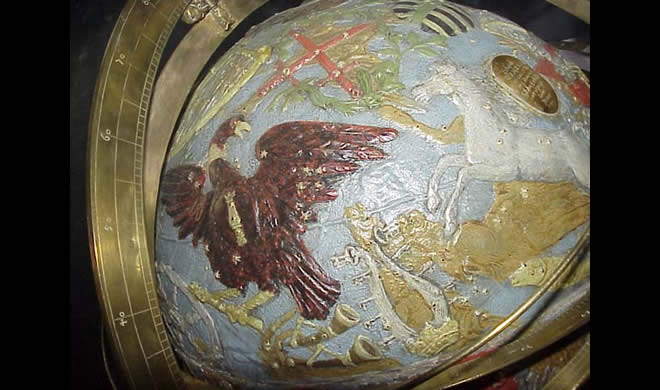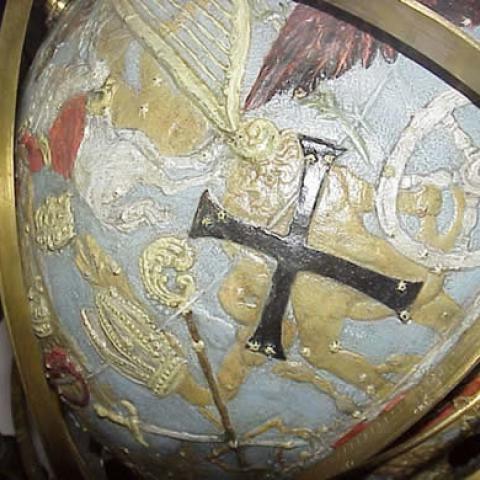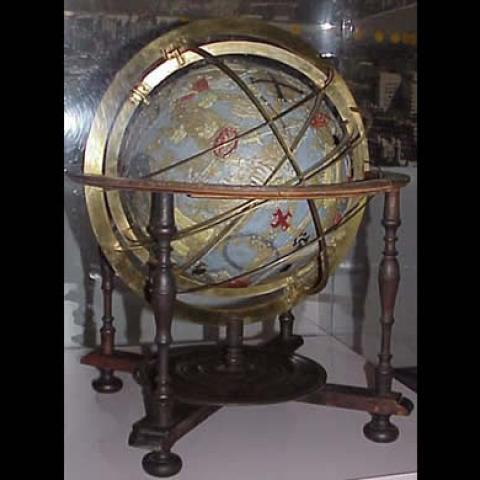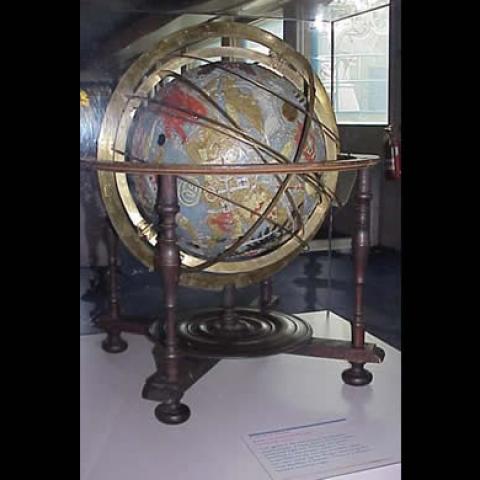
Long before there were planetariums or advanced technologies available for studying the sky, people devised ways of depicting the sun, moon, planets, and stars in relation to the Earth. There was a desire to learn about astronomical history and events; people wanted to figure out how Earth fit into the grand scheme of the universe. Globes helped to put objects into perspective, and served as scientific instruments, ornamental showpieces, and physical illustrations of the astronomy beliefs of the day.
Globes have been visual representations of the physical characteristics of Earth and Sky for thousands of years. Generally, there are three types of globes. Terrestrial globes detail geographical features of the Earth. There are also globes that illustrate the physical features of celestial bodies, such as the moon or Mars. Celestial globes, like the one pictured here, are spherical maps of the sky—models of the visible heavens.
As scientists and astronomers became more knowledgeable of the sky and objects in it, the celestial globe became more detailed and accurate. The concept behind it is that the globe is a sphere that shows the Earth as its imaginary center on which the stars, constellations, and various astronomical circles are drawn. It is mounted in a harness that allows it to rotate and be tilted to different latitudes. There were a few problems with this type of globe, however; for example, it depicts the figures of the constellations facing outward, toward the user, rather than inward, toward the center of the globe.
A man named Erhardt Weigel built this celestial globe near the turn of the 18th century. He was a professor of Astronomy at the University of Jena in Germany. A lamp placed in the hollow center projected light out through the small holes punched in the embossed copper sphere. The stars are represented by these small holes, and by looking into the globe through one of four larger holes, the stars are seen in their correct configuration as points of light against a dark background. Thus, the globe is the earliest known in existence of the optical planetarium. Weigel's model is dated 1699; it was acquired by The Franklin Institute in June of 1932 from Emil Hirsch of Munich, Germany.
The constellations Weigel used are not the standard ones, but ones he made up to depict the European royal families. Instead of the usual pagan figures, Weigel made the constellations into the arms of the ruling families. For example, the constellation Orion is a double-headed Austrian eagle.
Astronomy is one of the longest-studied sciences in history. Scientists have attempted to answer questions that seem far beyond our understanding for centuries. As long as we wonder about heavenly objects, some will try to recreate the nighttime sky with instruments such as the globe, lighting the world as the stars themselves do with their ideas, models, and theories.
Reference: Instruments of Science: An Historical Encyclopedia New York & London, 1998.
Note: The object pictured above is part of The Franklin Institute's protected collection of objects. The images are ©The Franklin Institute. All rights are reserved.




